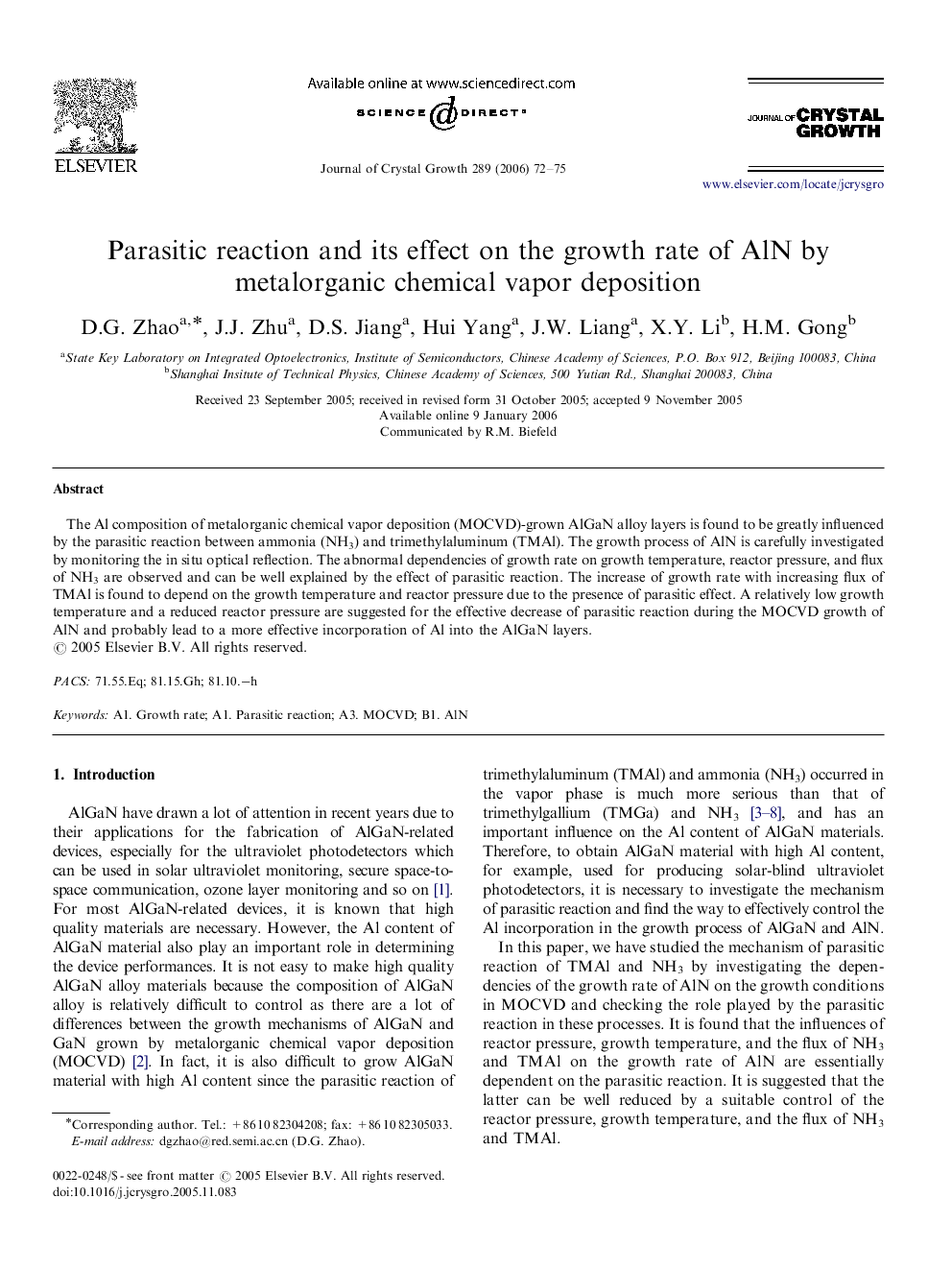| Article ID | Journal | Published Year | Pages | File Type |
|---|---|---|---|---|
| 1797130 | Journal of Crystal Growth | 2006 | 4 Pages |
The Al composition of metalorganic chemical vapor deposition (MOCVD)-grown AlGaN alloy layers is found to be greatly influenced by the parasitic reaction between ammonia (NH3) and trimethylaluminum (TMAl). The growth process of AlN is carefully investigated by monitoring the in situ optical reflection. The abnormal dependencies of growth rate on growth temperature, reactor pressure, and flux of NH3 are observed and can be well explained by the effect of parasitic reaction. The increase of growth rate with increasing flux of TMAl is found to depend on the growth temperature and reactor pressure due to the presence of parasitic effect. A relatively low growth temperature and a reduced reactor pressure are suggested for the effective decrease of parasitic reaction during the MOCVD growth of AlN and probably lead to a more effective incorporation of Al into the AlGaN layers.
